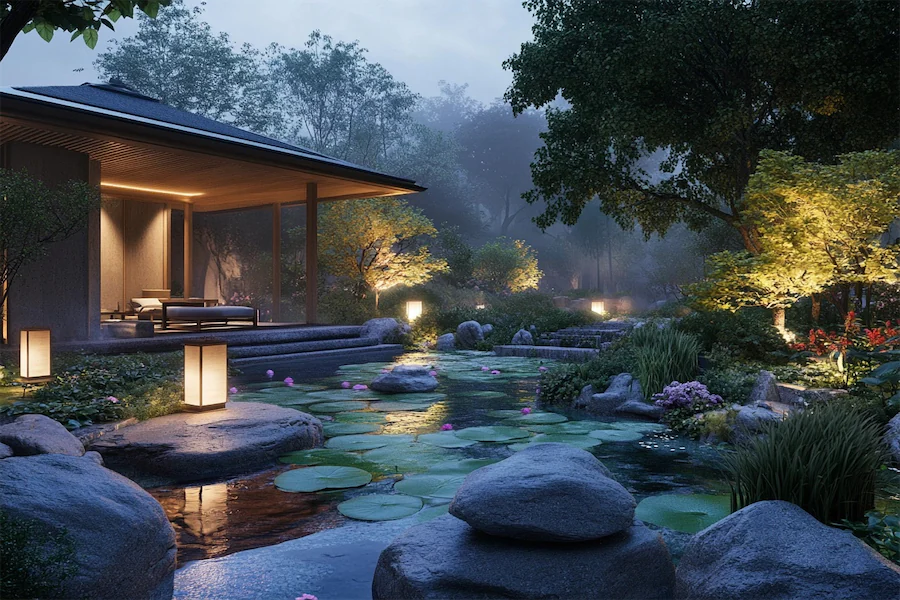A Zen Meditation Garden, or karesansui, is a minimalist dry landscape designed to encourage contemplation and meditation. Originating in Japan, these gardens utilize natural elements like rocks, gravel, and sand to symbolize broader natural landscapes, fostering a tranquil environment conducive to introspection.
History and Origins of Zen Meditation Gardens
The inception of Zen gardens is closely linked to the arrival of Zen Buddhism in Japan from China during the late 13th century. Initially inspired by Chinese garden designs, these gardens evolved to reflect Japanese culture and Zen Buddhist philosophy, emphasizing simplicity and mindfulness.
Over time, Zen gardens became integral to Japanese temples, serving as spaces for meditation and spiritual reflection.
Key Features of Zen Meditation Gardens
- Rocks and Stones: Central to Zen gardens, rocks often symbolize mountains or islands. Their placement is deliberate, adhering to principles of asymmetry and balance, embodying the concept of wabi-sabi, which finds beauty in imperfection and impermanence.
- Gravel and Sand: These elements represent water bodies, with patterns raked into them to mimic waves or ripples. The act of raking is a meditative practice, aiding in mental clarity and focus.
- Minimalist Plantings: While Zen gardens are predominantly composed of rocks and gravel, selective use of plants like moss or carefully pruned trees introduces subtle natural beauty, aligning with the principle of simplicity (kanso).
Applications of Zen Meditation Gardens
- Spiritual Retreats: Zen gardens provide serene environments for meditation, allowing individuals to engage in mindfulness practices amidst a tranquil setting.
- Residential Spaces: Incorporating Zen garden elements into home landscapes offers a personal sanctuary for relaxation and reflection, promoting mental well-being.
- Public and Corporate Spaces: Businesses and public institutions integrate Zen gardens to create calming atmospheres, enhancing aesthetic appeal and providing peaceful areas for employees and visitors.
Considerations When Designing a Zen Meditation Garden
- Simplicity and Minimalism: Focus on essential elements, avoiding unnecessary decorations to maintain a clean and uncluttered space that fosters tranquility.
- Natural Materials: Utilize materials like stone, gravel, and wood to create harmony with the environment, reflecting the Zen principle of naturalness (shizen).
- Asymmetry and Balance: Arrange elements in an asymmetrical yet balanced manner, encouraging viewers to find harmony in imperfection, a core concept in Zen aesthetics.
- Maintenance: Regular upkeep, such as raking gravel and tending to plants, is essential to preserve the garden’s intended appearance and to continue the meditative practices associated with its care.
Conclusion
Zen Meditation Gardens encapsulate the essence of Zen philosophy, offering spaces that promote peace, reflection, and a deep connection with nature. By embracing principles of simplicity, naturalness, and mindful arrangement, these gardens serve as timeless sanctuaries for meditation and spiritual growth.
